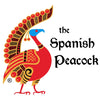Supported Spinning FAQ
I am new to supported spinning – what should I look for in my first spindle?
Supported spindle preferences, just like for drop spindles and wheels, vary widely! But here are some suggestions to get you started. For your first supported spindle, we recommend finding a balance between weight and length. Pocket Russians are cute, but their low weight means their spin stops before a novice can draft the fiber; on the other hand, a full sized ebony Tibetan spins forever, but is so heavy your hand can tire quickly. A good range for a first supported spindle is between 20 grams to 30 grams (though this is only a guideline)! For spindle length, consider your spinning surface – there can be a considerable height difference between spinning with your bowl in your lap or on a table top. The height of your bowl is a factor as well. A short spindle (such as a 9″ Pocket Tibetan) might work well for a short-waisted spinner with a tall lap bowl. A longer spindle might be better for taller people, or if your bowl has a lower profile. If you can try out a friend’s spindle, take one of our supported spinning classes, or find us at an event, flick several spindles and listen to what your hands, wrists, arms and shoulders tell you about the height and length that works for you!
You can listen to the Peahen's podcast on choosing a supported spindle here. Additionally she offers an online course which you can learn more about here.
What are the differences in supported spindle types?
In addition to the weight and length differences described above, the primary difference in supported spindles is whorl design. Whorls add weight, which adds momentum. A Tibetan-style spindle will be heavier, and spin longer, than a Russian of the same wood and length. Bead spindles provide a nice compromise between the two, because they still have a whorl, but it is smaller and lighter.
Visit the Field Guide to Spanish Peacock Spindles for additional information.
Do I have to use a bowl when supported spinning?
Bowls designed for supported spinning have a smooth surface to help reduce friction and increase spin duration. Additionally, many Spanish Peacock bowls have a dimple in the bottom to prevent the spindle from losing energy due to “walking” across the bowl’s surface. The right bowl for you – and your spindle! – can make all the difference in your supported spinning success. You can see many different options for supported spinning bowls here.
What fiber should I use when I am first learning supported spinning?
Any fiber which drafts smoothly can be used while learning to spin supported. Superfine merino is what we provide in our “Supported Spinning Bootcamp in a Bag”. The right fiber preparation also helps: open and airy preparations, such as batts or rolags, are recommended.
This seems so slow! Why would anyone spin supported rather than using a wheel or a drop spindle?
Supported spinning is appealing for several reasons, including portability, control, and ergonomics. You can spin supported anywhere you have a surface – such as long car trips or other social functions where sitting prevails! But perhaps more important is the control the spinner has over how thick or thin to draft and how much twist enters the yarn. No fighting with gravity, or struggling to keep your hands and feet in sync! Some people also prefer the ergonomics of supported spinning; for instance, spinners with shoulder problems may find supported spinning causes less irritation than the movements of drop spinning.
Where can I learn more?
The Peahen writes about supported spinning (among other topics) on her blog. She also teaches class - keep an eye on our calendar for upcoming events!
